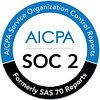Offshore staff can be an excellent way to expand your talent reach, rapidly fill open positions, and create the capacity you need to grow. There are a lot of mechanisms and platforms for hiring offshore staff but what do you do next? In most cases, offshore staff will have experience and qualifications that broadly matches what you are looking for but will require industry, process, and system specific training to make them the most successful. Training and the ramp up to full production of your offshore team is the most critical step to making your staff successful. This article will layout some best practices and practical methods for training offshore staff in hopes of making your offshore staffing journey easier and more successful.
The single most important part of training offshore staff is having a person on your local team that is bought in and willing to train. Where we see most offshore staffing partnerships fall apart is when the main local point of contact is either unwilling or unmotivated to train the team. If this happens, the team is in bad shape from the start.
Training is done differently by each organization. At a high level here is the process we advise, and most of our clients take, when training an offshore team.
- Share background documents, videos, and other study material
Prior to the team starting, share any helpful documentation about the role, company, and anything else pertinent. This will help them study, prepare, and have some context when training starts.
- Screen share training
Start with screen share training. Here the main point of contact on your team goes through tasks via screen share (Teams, Zoom, Google, etc.) and shows the offshore team how to perform each task and process.
- Creation of training manuals and process documents
The offshore team creates training manuals and process documents based on the screen share training. This gives them documents to refer back to at any point during production to help answer questions and solve problems.
- On the job training
Side by side performance with your main point of contact to ensure that the training material was understood and to make corrections and answer questions in real time.
- Validation of successful training by main point of contact
Once training concludes conduct a validation or certification process to ensure that the training material was understood.
- Approval of team training manuals and process documents
Main point of contact approves the training document and process document to ensure that the team has and is referring to correct information.
- Quality audit plan until team in full production
Develop a plan for quality audits. These may be more frequent at the start and then ramp down in frequency as the team become more proficient. For example, if the team is producing 20 widgets a week, the first week someone on the local team checks all 20. If all 20 are correct, the next week they check 10, and so on until the team is fully producing with no quality audits needed. If there are constant errors during this process, we know that re-training may be required.
Training new staff can be complex and time consuming, especially if they are offshore. These practical steps should help you get started training an offshore team. Companies like Connext, have internal training departments and management support to help make this process easier and more streamlined.







